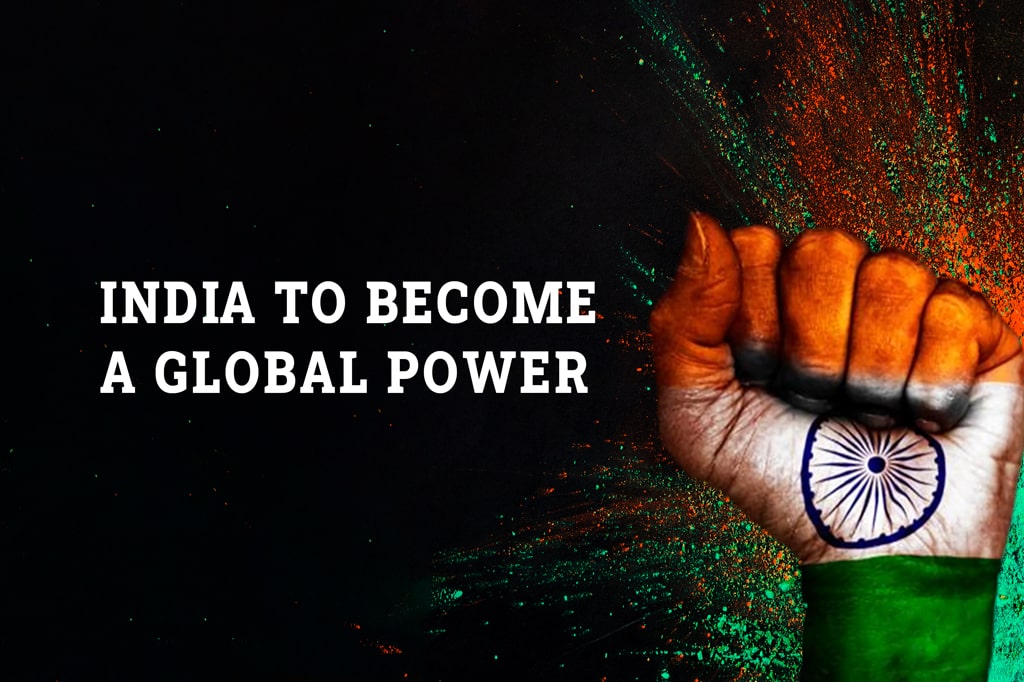The third epoch of Indian foreign policy will begin when the ambition to make India a great power is realized. To become a global power depends on its ability to achieve multidimensional success in terms of improving its economic performance and wider regional integration, acquiring effective military capabilities for power projection coupled with wise policies for their use.
Challenges
Diplomacy and International relations
India’s enemies are outnumbering its neighbors. This club has always had Pakistan as a permanent member. However, a sudden increase in the number of nations joining the club.
China’s rivalry with India was undeniable, but the open bullying China has begun against India is troubling. This rivalry was the cause of the standoff that occurred last year between the Indian and Chinese military. Nepal’s Chinese influence must also be addressed. Afghanistan is likely to support Pakistani and Chinese clubs after the Taliban take control of the country. Chinese debt already has a significant hold on Sri Lanka. Bangladesh appears to be on the same path as Sri Lanka. India will need to come up with an immediate solution to this issue given that a massive adversary is encircling the country with its allies.
Education(Beti Padavo, Beti Bachao)
Skilled citizens are one of the most crucial criteria for any developed nation. Education is required to acquire skills. Therefore, a nation is doomed if its education system is lacking. India has a literacy rate of 77.7% on average. The overall literacy rate for men in India is 84.7%, while it is only 70.3% for women.
It is also worth noting that male literacy is higher than female literacy in all the states. This needs to change immediately. A significant number of students complain about the Indian education system as well stating that it is old and needs reformation.
Health Care
Challenges to Indian healthcare: “The five A’s” describes five major obstacles to Indian healthcare. They are-
- Lack of awareness
- Lack of access
- Absence of the human power crisis in healthcare
- Affordability or the cost of healthcare
- Accountability or the lack of it
Using the population for its advantage
However, India will need to recognize that not every one of its 1.35 billion people is the same. As a result, it must assist everyone in acquiring relevant skills. Even a laborer ought to have extensive training for his job. Using the population to one’s advantage would truly mean doing so.
Industry must be a key focus
India has a lot of challenges when it comes to starting and running a successful business, according to aspiring entrepreneurs and businessmen. Politics persists despite the government’s efforts to support business people and entrepreneurs through programs like “Make in India.”. Recent vandalism in the Apple factory, the breaking of Jio towers in Punjab during farmer protest, sends out a very wrong signal to the world outside. Companies and businesses must be supported by the nation as a whole.
Steps to overcome Challenges
Strong Economy:
The majority of India’s revenue still comes from agriculture and tax collection. Our manufacturing sector must expand. Although foreign investments have recently begun to flow in, the majority of them are aimed solely at capturing Indian markets. Products made in India are rarely used by other nations because they cannot compete globally and are only used by Indians. Instead of just being consumers, we need to become producers. It appears that we are not paying much attention here. Our manufacturing sector only experienced 3.1% growth in the most recent quarter. India still aims to become a 5 trillion-dollar economy by 2024, whereas the United States has a 21 trillion-dollar economy. The agricultural economy label needs to be removed as soon as possible.
Defense:
Despite the fact that we have the seventh-largest navy, fourth-largest Air Force, and second-largest army. Yet, when we take a gander at the gear the majority of them have a place with an alternate age. We don’t use the most cutting-edge or cutting-edge technology. In addition, 99 percent of our defense equipment is imported. A superpower cannot rely on the safety of other nations. A robust defense needs to be built on top of a robust economy.
Population Control:
India’s population is booming. India may surpass China in terms of population by 2025, despite being the seventh largest country by area. Such a huge population is difficult to manage. It’s an overwhelming task to cater to the needs of 1.25 billion people. High population leads to improper distribution and overexploitation of resources
Education and Healthcare:
All developed nations have taken this first and foremost step. They made significant investments in these two areas and increased literacy rates and life expectancy. India still has a literacy rate of what China had in 1991. And it is a very known fact that we have underinvested in these two areas, even after knowing that they are the solution to 70% of our country’s problems. They will raise the standard of living and clearly the USA’s standard of living is quite high as compared to India.
Strong Diplomatic and Defence Relations:
A global superpower has the ability to influence the decisions of countries thousands of miles away, forcing a country to think twice before taking any step which could adversely affect it. Has been giving billions of dollars of financial aid to the needful countries (India was also a beneficiary of the USA at the time of Independence), helps them in development, which is enough to manipulate the policy-making of a country. Additionally, the United States of America is a member of every major global governing and decision-making body. India will undoubtedly require decades to achieve this level of global prominence.
Conclusion
As the nation enters another period of imagined development, right now is an ideal opportunity for all Indians to meet up as one and address the most squeezing cultural difficulties confronting the nation today: skill development and job creation, rural India’s socioeconomic inclusion, and the creation of a sustainable and healthy future for all citizens. Collaborative efforts, especially public-private partnerships to address these challenges, can unlock the full potential of a young, progressive and dynamic nation, and establish India as a model for the world’s fast-growing consumer markets.
Frequently Asked Questions:
How can India become a global power?
One of the world’s potential superpowers, India is regarded as a soft power. Numerous indicators are responsible for this potential, the most important of which are its demographic trends, rapidly expanding economy, and expanding military. India is quietly asserting its status as an economic superpower.
What is India’s role in the global economy?
These nations account for 40% of the world’s GDP (gross domestic product). India, which is already using the World Bank’s PPP (Purchasing power parity) exchange rate, has the 3rd largest GDP in the world.
Is India a future superpower?
Overall, we anticipate that India will surpass Japan and Germany to become the world’s third-largest economy within a decade. A vital piece of India’s proceeded with rise will be its capacity to develop its assembling area and challenge China as the world’s No 1 exporter.





